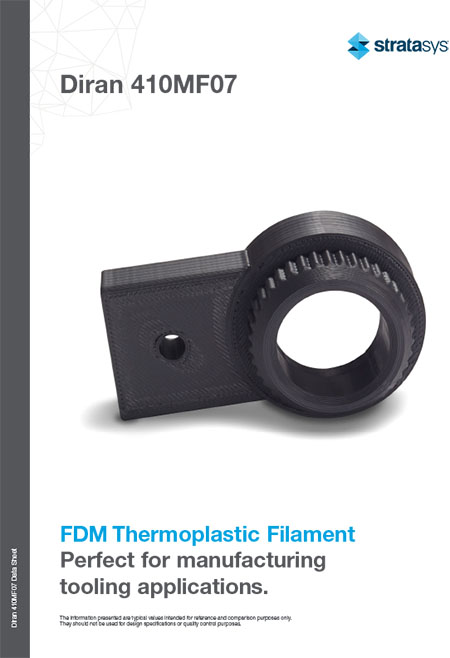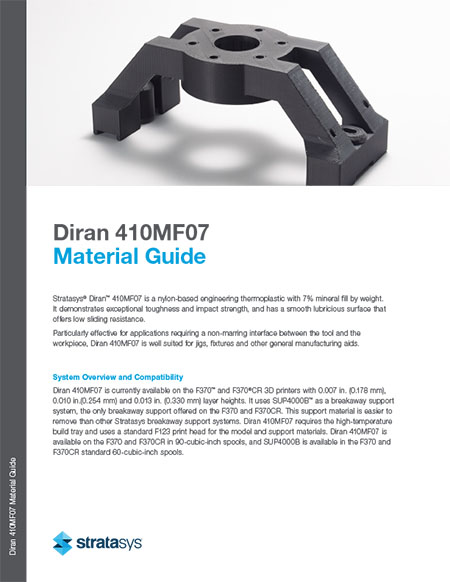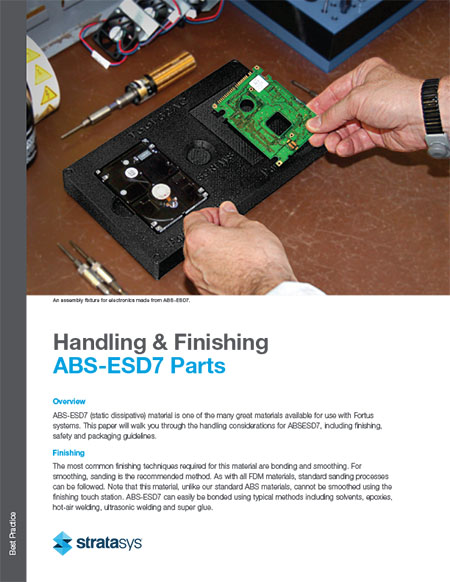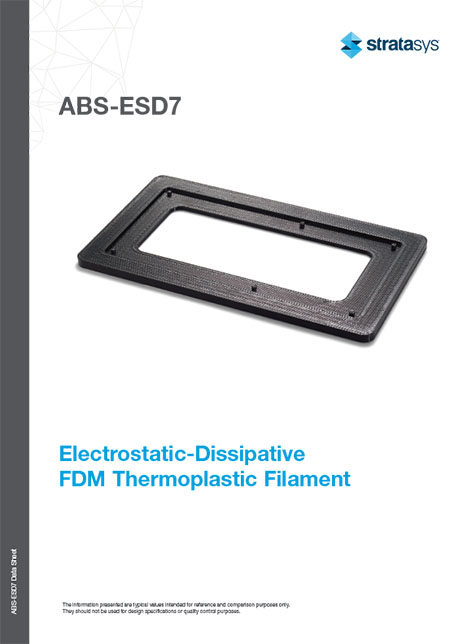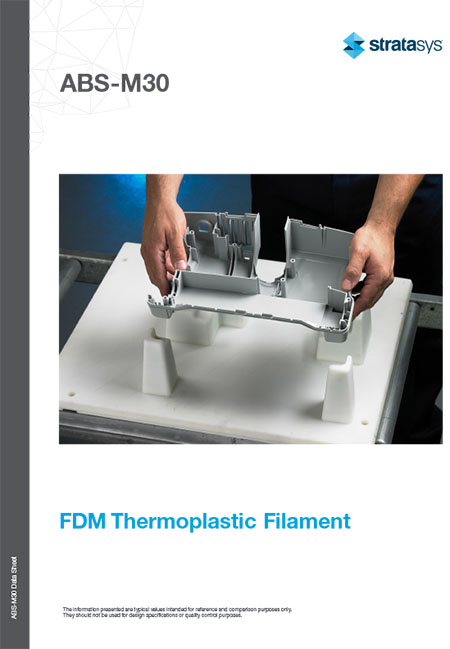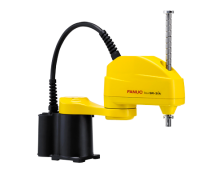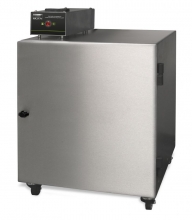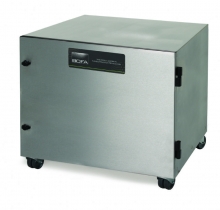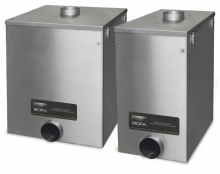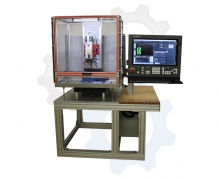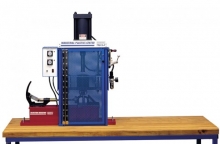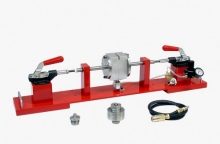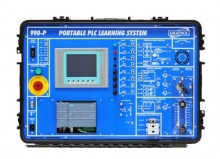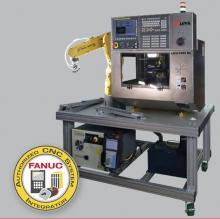American manufacturing is growing faster than in decades, but a shortage of skilled laborers is stunting its full growth. The decline in trade school graduates over the past few decades has left a gaping hole in potential employees. Job openings remain unfulfilled as companies bend over backward to attract new talent to replace the current aging workforce.
These efforts, while noble, can quickly grow costly because of low labor retention and high turnover rates in the manufacturing industry. Adding in the fact that automation and robotics are replacing positions formerly held by humans, it is even more imperative that positions reserved for humans are filled by talented people.
How can manufacturing companies train new hires in cost-effective, engaging, and interesting ways that will encourage them to work longer in the industry? First, integrate VR training with traditional training—which is often conducted in classrooms or on the production line, taking senior employees away from their jobs. Virtual reality training provides manufacturers with the opportunity to simulate a production line environment before new laborers even hit the floor.
Virtual reality can train fresh hires or assess current employees on product assembly, hazard recognition, equipment handling, and more. Whichever way companies choose to utilize this technology, it holds the key to efficiency and future successes for manufacturers.
Every company knows how important it is to be compliant with OSHA protocols. Still, most are not aware of how to efficiently train their employees to follow these guidelines across various disciplines.
Traditional safety training can require costly outside instructors, time off the job, and pricey specialized equipment. Virtual reality, however, can help quickly familiarize novice and seasoned employees with updated safety protocols while saving time, money, and energy for both employer and employee.
Employees trained in these realistic, virtual environments will be familiarized with extreme heights, live wires, complex machinery, and more, helping them build muscle memory and retain pertinent information vital to on-the-job success. Using virtual reality as a training and assessment tool can give management a new perspective on improving their safety training.
System Overview and Compatibility
ABS-CF10 is currently available on the F123™ Series machines with 0.007 inch (0.178 mm), 0.010 inch (0.254 mm), and 0.013 inch (0.33 mm) layer heights. It requires a dedicated ABS-CF10 extrusion head, denoted with a dark green case, for all layer heights for the model material. It is compatible with QSR Support™ as a soluble support system and requires a standard F370™ extrusion head for all layer heights for the support material. This system uses the standard F123 Series build tray. ABS-CF10 and QSR are available in a standard F123 90-cubic-inch spool.
Stratasys ABS-CF10 combines standard ABS (acrylonitrile butadiene styrene) material with 10% chopped carbon fiber by weight.
The result is a low moisture-sensitive FDM® thermoplastic 50% stiffer and 15% stronger than standard ABS 3D printing material.
Typical applications include manufacturing tools, jigs, fixtures and end effectors that benefit from the combination of increased stiffness and reduced weight.
Diran™ 410MF07 is a nylon-based thermoplastic FDM® material, mineral-filled 7% by weight. It demonstrates very good toughness and impact strength combined with resistance to hydrocarbon-based chemicals. Its smooth, lubricious surface quality offers low sliding resistance.
Typical applications include jigs, fixtures and other forms of general manufacturing tooling, and is particularly effective for applications needing a non-marring interface between the tool and the workpiece.
Stratasys® Diran™ 410MF07 is a nylon-based engineering thermoplastic with 7% mineral fill by weight. It demonstrates exceptional toughness and impact strength and has a smooth lubricious surface with low sliding resistance.
Particularly effective for applications requiring a non-marring interface between the tool and the workpiece, Diran 410MF07 is well suited for jigs, fixtures, and other general manufacturing aids.
System Overview and Compatibility
Diran 410MF07 is currently available on the F370™ and F370®CR 3D printers with 0.007 in. (0.178 mm), 0.010 in.(0.254 mm) and 0.013 in. (0.330 mm) layer heights. It uses SUP4000B™ as a breakaway support system, the only breakaway support offered on the F370 and F370CR. This support material is easier to remove than other Stratasys breakaway support systems. Diran 410MF07 requires the high-temperature build tray and uses a standard F123 print head for the model and support materials. Diran 410MF07 is available on the F370 and F370CR in 90-cubic-inch spools, and SUP4000B is available in the F370 and F370CR standard 60-cubic-inch spools.
Overview of Stratasys FDM 3D Printers and Materials
FDM® (fused deposition modeling) 3D printers offer unparalleled versatility to turn your CAD files into durable parts. These parts are tough enough to be used as advanced conceptual models, functional prototypes, manufacturing tools, and production parts. Engineers can produce various products just by loading different files and materials. No traditional machining process can do that.
Handling & Finishing ABS-ESD7 Parts
Overview
ABS-ESD7 (static dissipative) material is among the many great materials available for the Fortus systems. This paper will walk you through the handling considerations for ABSESD7, including finishing, safety, and packaging guidelines.
Finishing
This material's most common finishing techniques are bonding and smoothing. For smoothing, sanding is the recommended method. As with all FDM materials, standard sanding processes can be followed. Unlike our standard ABS materials, note that this material cannot be smoothed using the finishing touch station. ABS-ESD7 can easily bond through typical methods, including solvents, epoxies, hot-air welding, ultrasonic welding, and superglue.
ABS-ESD7™ (acrylonitrile butadiene styrene-electrostatic dissipative) is an ABS thermoplastic with static dissipative properties suited for static discharge-sensitive applications. ABS-ESD7 prevents static electricity buildup, so it will not produce a discharge or attract other materials like powders, dust, and fine particles.
The material is ideal for jigs and fixtures used to fabricate and assemble electronic components and associated production line and conveyor parts. It is also useful for producing functional prototypes, enclosures, and packaging.
Pages
-
FANUC’s new SCARA robots are ideal for high-speed, precision applications such as assembly, pick and place, testing/inspection and packaging processes.
-
In the rare event that a burning ember or spark is drawn into the fume extraction unit, there is the possibility that debris in the filters could ignite. Although any resultant fire would typically be retained within the fume extraction unit, this would cause significant damage and in extreme circumstances, the risk may extend beyond the extraction unit. For processes where such risks have been identified, additional protection in the form of an in-line firebox is an additional precaution.
-
The BOFA inline pre-filter 1000 has been designed specifically for applications that generate high amounts of dust or particulate.
This inline filter unit is positioned alongside the main BOFA fume filtration system to increase the overall filter capacity and extend the life of the main filters. The DeepPleat DUO pre-filter incorporates a massive drop-out chamber within the filter, having a volume area of 15ltrs. Above the drop-out chamber but still within the housing there is a sealed 200mm deep pleat layer of F8 media giving a surface area in excess of 30 sq meters.
-
The BOFA inline prefilters have been designed specifically for applications that generate high amounts of dust or particulate.
-
Autolab has been specifically designed to allow you to build a NATEF Certified auto program that will enable your students to become new hi-tech auto technicians. The Autolab learning platform provides a series of cloud-based resources that can be used to create an auto teaching facility that will deliver the knowledge and practical skills students need to achieve success.
-
Item Number:LMV-300 CNC
The LMV-300 CNC machine dubbed “Quicksilver” delivers high rigidity, high accuracy and high-speed machining for all your cutting needs. The entire machine’s construction stably attaches to a granite bed thus dampening vibrations and making the machine a robust system. The cornerstone of the machine is that it is literally made from stone.
-
Item Number:96-PLS1TThe injection molding trainer includes a temperature control system, 4 oz. shot material feed system with electro-pneumatic control, dual heater system, barrel and nozzle, safety enclosure, heavy-duty workstation, 8-ton clamping system, mold offset plates, set of injection starter molds, interactive curriculum for both theory and lab, and a teacher’s assessment guide.
-
Item Number:96-PLS2The 96-PLS2 includes a clamping system, extrusion die for use with blow molding, pneumatic blow system, starter mold for blow molding, extrusion die, interactive curriculum for both theory and lab, and a teacher’s assessment guide. Students will learn skills such as creating a plastics part using a blow molding operation, troubleshooting blow molds, designing a blow mold using CAD/CAM, creating a blow mold using a CNC machine, creating a plastics part using an extrusion operation, and testing an extrusion for uniform diameter.
-
Item Number:990-PS712Inside this attractive, durable carrying case, learners will find a world-class learning system with components like the KTP 600 Human Machine Interface (HMI) panel, which allows user input and displays output data. Combined with Amatrol’s thorough curriculum, learners will gain both theoretical and hands-on knowledge that can start them on a path towards a rewarding career.
-
Item Number:LMV-F400 RLAn excellent teaching machine with an all in one production center. This top of the line Milling Machine includes an attached FANUC LR Mate 200iD Robot arm. With this machine, educators have everything they will need to teach students both Robot programming and CNC machining.



